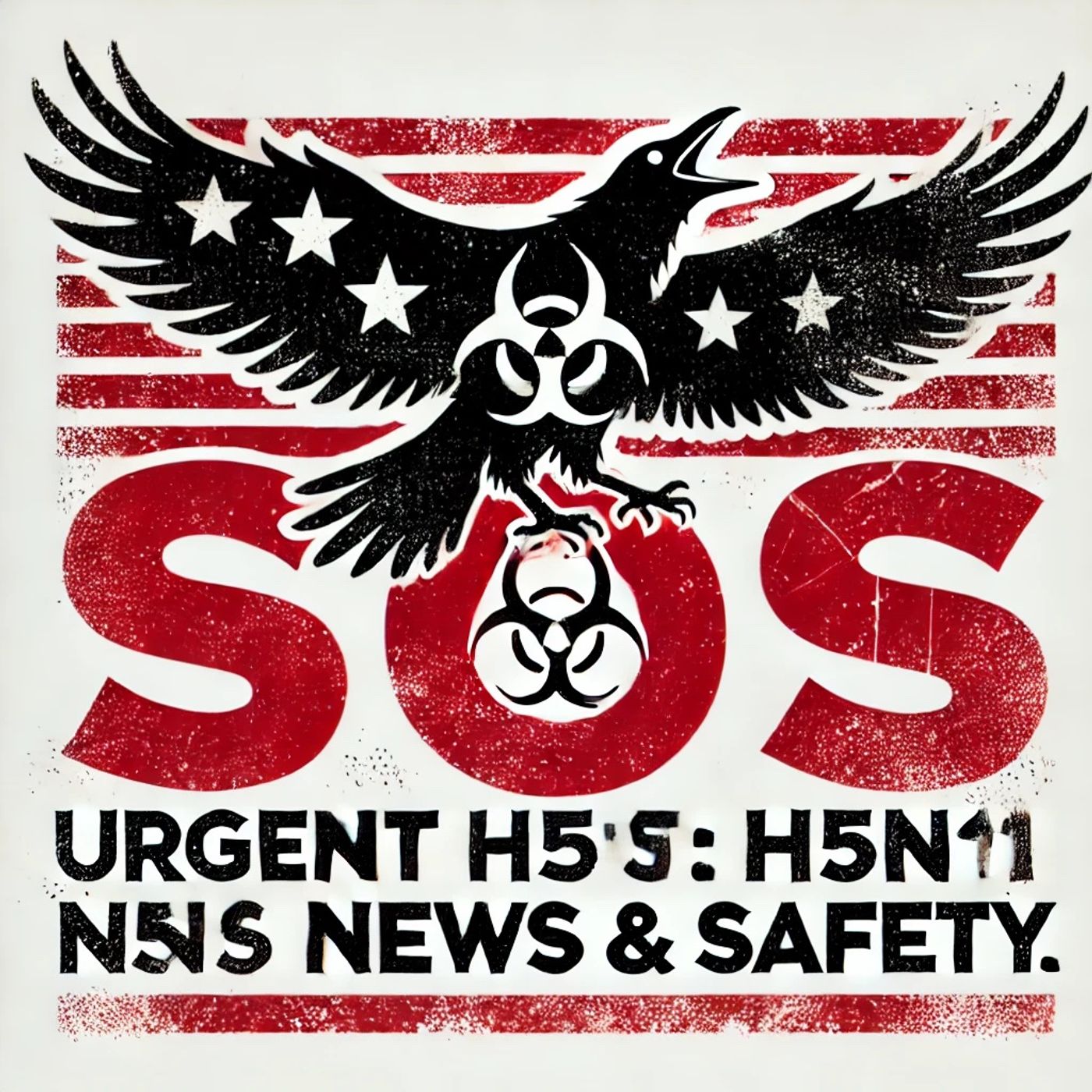Podcast Episode Details
Back to Podcast Episodes
H5N1 Bird Flu Outbreak Intensifies Across US Dairy Herds and Farms Raising Concerns for Human Health in 2025
This is Bird Flu SOS: Urgent H5N1 News & Safety. I’m your host, and today is August 22, 2025. We interrupt your day with a critical update on the ongoing H5N1 bird flu outbreak—an event that is rapidly reshaping both animal and human health in the United States and beyond.
Here’s the urgent news. In the last two weeks, the California Department of Food and Agriculture confirmed 43 new cases of H5N1 in dairy herds that had previously tested clear but are now re-quarantined. This follows new waves of infection and underscores a concerning pattern: H5N1 is not only persisting but resurging in previously affected areas. According to the CDC, H5N1 is spreading across numerous states, moving between poultry, dairy cattle, and—most alarmingly—human farm workers. Weld County, Colorado has become the epicenter of a multi-species outbreak, involving cows, poultry, cats, and even local wildlife.
The CDC has confirmed a total of 70 H5N1 human cases in the US since April 2024, mostly among farm and poultry workers, with a worrying number of mild eye symptoms and respiratory illnesses. CDC influenza chief Dr. Timothy Uyeki stated this week, “The spread of H5N1 across species boundaries—including to humans—heightens the concern for potential reassortment and more widespread disease. While the general public risk remains low, for those working with livestock and poultry, the risk is now greater than ever.”
Let’s talk about what you need to do right now if you live or work in affected areas:
- Avoid all contact with sick or dead birds and livestock.
- Do not consume raw milk, unpasteurized dairy, or undercooked poultry products from affected regions.
- Use protective masks, gloves, and eyewear if you are required to handle animals or work on farms.
- Ensure all animal housing areas are cleaned regularly and disinfected, following agricultural authority guidelines.
If you or someone you know develops symptoms such as high fever, cough, eye redness, difficulty breathing, or severe fatigue after exposure to birds or livestock, seek emergency medical attention immediately. Early treatment is crucial. According to the World Health Organization, most severe or fatal human H5N1 cases globally have resulted from direct contact with sick animals and delay in medical care.
If you require emergency assistance, call your local health department or the CDC’s 24-hour hotline for guidance. The Animal and Plant Health Inspection Service provides real-time updates and a tracker for animal and human cases if you need to monitor local risk.
While reports naturally cause concern, health authorities emphasize that panic will not help. Ongoing research and rapid response teams are in place, and while human-to-human transmission has not yet been documented, vigilance is essential. As Dr. Uyeki reminded us earlier today, “Reporting every suspected case saves lives—yours and the community’s.”
Thank you for tuning in to Bird Flu SOS—a Quiet Please production. For more details or to follow this unfolding story, check out QuietPlease.ai and make sure to come back next week for the latest on this urgent situation. Stay informed, stay safe.
For more http://www.quietplease.ai
Get the best deals https://amzn.to/3ODvOta
Published on 1 day, 17 hours ago